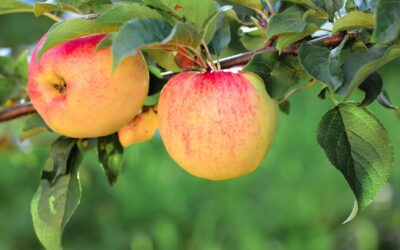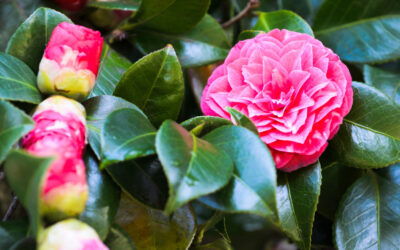All hydrangeas are equally beautiful, but they can also be equally confusing when it comes time to prune! It’s important to know the type of hydrangea that you have so that you know the proper time to prune without removing any new flower buds. Four types of common hydrangeas are bigleaf, smooth, panicle, and oakleaf. Not sure what type you’re getting? Check the plant tag at the garden center!
Pruning is an important part of gardening. You’ve put a lot of time, energy, and money into your garden beds – keep them tidy and nice by removing any wayward stems! Pruning also keeps the plant healthy by promoting new growth and encouraging flowering. You’ll want to make your cut at a 45-degree angle where a leaf is attached to the stem. Clean your tools thoroughly with 70% isopropyl alcohol in between plants to avoid spreading diseases.
Bigleaf Hydrangeas
Hydrangea macrophylla
Bigleaf hydrangeas have two common flower shapes: mopheads (round flower heads) and lacecaps (flat flower heads). These hydrangeas bloom on old wood, or stems that were produced the previous growing season. Wait until the summer or early fall as the flowers fade to cut back 1/3 of the plant to its base.
Martin’s Home & Garden stocks these bigleaf hydrangea varieties:
- Big Daddy
- Blue Enchantress
- Endless Summer collection
- Glowing Embers
- Let’s Dance collection
- Merritt’s Pink
- Ruby Blossom
- Seaside Serenade collection
Smooth Hydrangeas
Hydrangea arborescens
Smooth hydrangeas are sometimes called wild hydrangeas because it is native to the southern and eastern United States. The ball-shaped blooms grow on new wood – new stems that were produced that growing season. Prune these in the late winter or early spring, before flowering begins. Cut them back to just 1’ to 2’ tall.
Martin’s Home & Garden stocks these smooth hydrangea varieties:
- Annabelle
- Invincibelle collection
Panicle Hydrangeas
Hydrangea panculata
Panicle hydrangeas have cone-shaped blooms that grow on new wood. Prune them at the same time as your smooth hydrangeas in the late winter or early spring. Thin out weaker stems completely as you prune to help it grow stronger ones.
Martin’s Home & Garden stocks these panicle hydrangea varieties:
- Baby Lace
- Bobo
- Candy Apple
- Confetti
- Fire Light
- Little Lime
- Little Quick Fire
- Limelight
- Low Tide
- Mini Penny
- Pinky Winky
- Strawberry Shake
- Tardiva
- Tidal Wave
- Vanilla Strawberry
- White Diamond
Oakleaf Hydrangeas
Hydrangea quercifolia
Oakleaf hydrangeas get their name from their leaf shape, which resembles leafs on an oak tree. Like bigleaf hydrangeas, their cone-shaped blooms grow on old wood. However, these hydrangeas like to be left mostly alone. You can prune it enough to improve its shape after flowering is done in the late summer or fall, but limit your cutting to primarily dead or broken branches.
Martin’s Home & Garden stocks these oakleaf hydrangea varieties:
- Alice
- Munchkin
- Ruby Slippers
- Sikes
Why Isn’t My Hydrangea Reblooming?
This is one of the most common questions our team gets and the most common question we ask in return is, “When did you prune it?”
If you didn’t prune your hydrangea at the right time, that’s okay! You will go a season without blooms, but they will forgive you and flower again the following year. If you need more advice on how to properly care for your hydrangeas, our team of experts at Martin’s Home & Garden are ready to help!
This blog post was also published as an article in The Murfreesboro Post on August 5, 2019.


